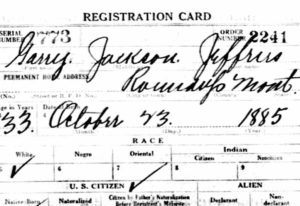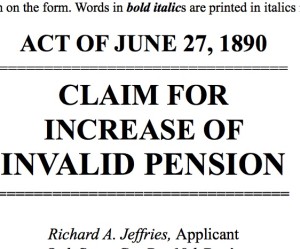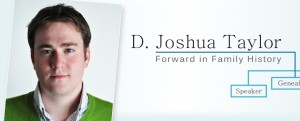 Two weeks ago, I started a 30 x 30 challenge in which I committed to working at least 30 minutes each day on my family history research for 30 days. My challenge goes from November 2 to December 1.
Two weeks ago, I started a 30 x 30 challenge in which I committed to working at least 30 minutes each day on my family history research for 30 days. My challenge goes from November 2 to December 1.
I’m happy to say that I’ve kept with my commitment, with the exception of Election Day, November 8. I was able to cut myself some slack over that (because: Election Day), especially since I spent the bulk of the day on November 6 working on my project.
During these past two weeks, I’ve been working on processing my great great grandfather’s Civil War pension file, which I received in the mail last year from the National Archives. What do I mean by processing? I detailed the procedure in a previous post, but in a nutshell, this is the drill:
- Put the documents in chronological order (they were in no particular order)
- Number the documents.
- Create a label for each with a source citation.
- Affix the labels.
- Scan the whole thing.
- Transcribe each document
- Abstract each document (that is, pluck out the salient data from each record).
I did this for the first of the three Union pension files I have, for my 3rd great grandfather, Richard Anderson Jeffries. The transcribing took place during an August 2015 30 x 30 challenge. It was a really beneficial effort.
For this current file, that of George Washington Adams, the task is more daunting. R.A. Jeffries had 27 documents in his file. G.W. Adams had 138. That’s right, five times as many.
I had already put the documents in order and started the labels some time in the last year. During this month’s 30 x 30 challenge I finished the labels, did the scanning and am now in transcribing mode. At least with the early documents, I find I can get about one document transcribed in 30 minutes. Sometimes I’ll also fit in abstracting a document in that time frame. So far, I have seven documents transcribed. Only 131 to go.
Obviously, if I do this 30 minutes at a time it will take several months of daily effort to complete. I’m going to try to put more than a half hour in most days. But I can tell you one great benefit of the challenge: If I hadn’t committed to 30 minutes a day, I think I’d have hesitated to get started because the task is so daunting. I have another couple of weeks in the challenge and by the end of it at least I’ll have a toe hold on the project.
The good news is that the information gets more interesting the further into the pension file I get. (There were some allegations of wrongdoing.) So a carrot is being dangled in front of my nose. And some of those later documents are really short so they shouldn’t take so long to transcribe.
I’m so grateful to have this focus and this time limit to get me through this somewhat tedious, if rewarding, project.
How about you? If you signed on to do the 30 x 30 challenge, how’s it going?
 When you’re doing genealogy research, it’s easy to stumble on facts you’re not looking for. Let’s say you’re researching your great grandfather. Ancestry gives you all sorts of information about his brother. Do you take the time to carefully document the information on the brother?
When you’re doing genealogy research, it’s easy to stumble on facts you’re not looking for. Let’s say you’re researching your great grandfather. Ancestry gives you all sorts of information about his brother. Do you take the time to carefully document the information on the brother? When I took
When I took  I’m a professional organizer and I routinely give time-management advice to my clients who want it. But, as regular readers of this blog know, managing my genealogy research time is a work in progress for me. I struggle with staying focused, knowing what to work on and combating overwhelm.
I’m a professional organizer and I routinely give time-management advice to my clients who want it. But, as regular readers of this blog know, managing my genealogy research time is a work in progress for me. I struggle with staying focused, knowing what to work on and combating overwhelm.